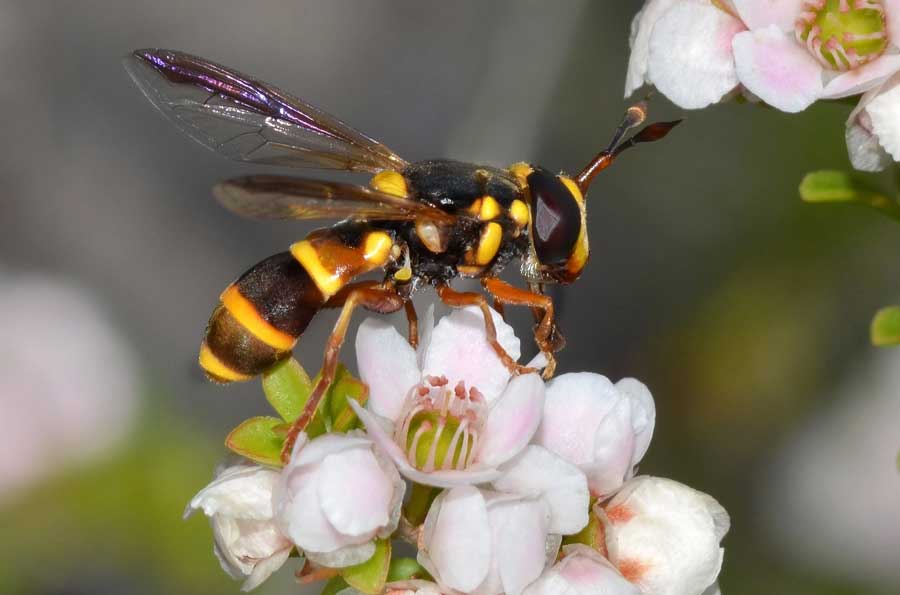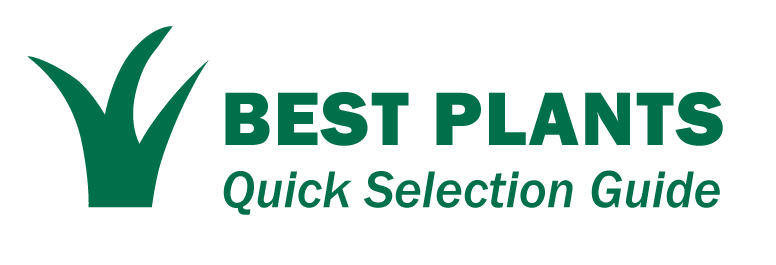Are you a gardener looking to make your patch of green more beneficial to the environment? Have you ever wondered how your garden can contribute to the preservation of our precious ecosystem?
If so, you’re in the right place. In this article, we’re exploring how selecting the right Australian native plants can create a haven for local pollinators, enhancing biodiversity, and promoting a healthier environment.
We’ll also take a look at some of the best plants you can put in your garden with the purpose of attracting pollinators, and what times of year they typically flower.
Native Australian blue tiger butterfly (Tirumala hamata) on Callistemon salignus in Marchant Park, in the Brisbane suburb of Aspley.

Why Should We Help Native Pollinators in Our Gardens
One of the key reasons to help native pollinators in our gardens is to enhance biodiversity. By cultivating a diverse range of native plants, we provide nourishment and habitat for a variety of pollinators. This encourages a balanced ecosystem and is a small but significant step towards mitigating the biodiversity crisis.
But there are selfish reasons to bring pollinators into our garden, as well.
Integrated Pest Management (IPM) is a holistic approach to pest control that reduces reliance on pesticides. Many pollinators, such as hoverflies and microwasps, are beneficial insects that prey on common garden pests. Providing their adult life forms with nectar encourages them into your garden so that they can lay their eggs into your pests, and their larvae decimate their populations for you.
Beyond these benefits, attracting native pollinators can lead to more abundant fruit and vegetable harvests and add vibrancy to our gardens with their presence.
I mean, who doesn’t love to see native bees and butterflies in their garden?
Understanding Specialist vs Generalist Pollinators
In the world of pollinators, there are specialists and generalists. Specialist pollinators are adapted to pollinate specific plants. For instance, the orchid dupe wasp is a specialist pollinator that exclusively pollinates the tongue orchid in Australia.
On the other hand, generalist pollinators, such as many bees and butterflies, can pollinate a wide variety of plants. Different pollinators have varying dietary and habitat requirements, which we can cater to by cultivating a diverse range of native plants.
Given the broad and complex nature of individual pollinator-plant relationships, this article will primarily focus on how to attract and support generalist pollinators.
Hoverflies are generalist predators, and are one of our best friends as gardeners. This adult wasp-mimicking fly is feeding on the nectar of this native Australian waxflower.

Buzz Pollination: An Intriguing Phenomenon
But before we go on, let’s talk about something too interesting not to include.
Buzz pollination is a unique process where certain pollinators, like our native blue-banded bees, vibrate flowers at a specific frequency to dislodge pollen. Some plants, like the Australian desert raisin (Solanum centrale), rely on buzz pollination for reproduction. Including buzz pollination plants in your garden can provide a food source for these types of pollinators.
Catering to the Needs of Pollinating Insects
To support our native pollinators, we need to provide them with a safe habitat, a steady food source from nectar and pollen, and access to water.
By selecting a variety of native plants that flower throughout the year, planting densely, and maintaining a shallow water source, we can create a garden that meets the needs of native pollinators.
Highlighting the Best Australian Natives for Pollinators
Let’s delve into a few of the best native plants for generalist pollinators to transform your garden into a sanctuary for pollinators. We’ll be focusing on genera rather than individual species, so just know that each species and variety within the groups below will have their own strengths and weaknesses.
Westringias
Westringias, commonly known as “native rosemary,” are hardy shrubs with delicate flowers that attract insects like bees and butterflies. They tend to be drought-tolerant and thrive in a variety of soil conditions, including with the presence of salt, making them a practical choice for any garden.
They flower all year round, often with their most profuse flowering occurring in spring.
Callistemons
Commonly known as bottlebrush plants due to their distinctive flower spikes, callistemons are a magnet for native insects and birds, especially rainbow lorikeets. These plants are hardy and can survive in various climates.
Callistemons tend to flower in the warmer months, especially in spring.
Correas
Correas, often referred to as native fuchsia, offer tubular flowers that are particularly attractive to birds and insects. They bloom in cooler months when many other plants are not in flower, providing a critical food source during these times.
You’ll see their flowers from winter through spring, sometimes beginning their flower season in autumn.
Grevilleas
Grevilleas are renowned for their spectacular spider-like flowers that come in a variety of colours. They’re a favourite among nectar-feeding birds and insects.
Grevilleas tend to flower in the winter months, providing another resource for pollinators the the time of year when food is most scarce.
Yellow Buttons
Yellow buttons, or Chrysocephalum apiculatum, are low-growing perennials with bright yellow flowers. They’re a food source for a variety of pollinating insects and add a dash of colour to your garden.
They flower from late spring to summer.
Paper Daisies
Paper daisies (Xerochrysum spp.), with their vibrant, long-lasting flowers, are an excellent choice for attracting a wide range of pollinators. These plants are also drought-tolerant, making them suitable for dry climates.
They flower from spring through summer, sometimes into autumn.
Kangaroo Paws
Kangaroo paws are iconic Australian plants with unique, paw-like flowers that attract nectar-feeding birds. They’re a beautiful and practical addition to any pollinator-friendly garden.
Kangaroo paws usually flower in the warmer months.
Gum Trees
Gum trees, or eucalypts (belonging to the Eucalyptus, Angophora and Corymbia genera), aren’t just a symbol of Australia, they also provide copious amounts of nectar and pollen for insect, bird and mammal pollinators. They also offer habitat for various species.
Different gum trees will flower at different times of the year.
Banksias
Banksias are another group of plants known for their unique flower spikes and ability to thrive in poor soils. Their nectar-rich flowers are a favourite among birds, native bees, and other pollinators.
Banksias flower from late summer to autumn, sometimes through winter.
Acacias
Acacias, also known as wattles, are quick-growing plants that produce fragrant, fluffy yellow flowers. They’re a vital early spring nectar source for various insects and birds in the wild.
Many banksias flower in the warmer months, but different species will flower at different times of the year.
Native Grasses
Native grasses, such as kangaroo grass, pennisetums and poas, offer shelter for ground-dwelling insects and seeds for a range of critters. They’re often overlooked because they don’t produce nectar, but play a crucial role in supporting pollinators, including as a “host plant” for native butterflies to lay their eggs on so their caterpillars can get fat and juicy. A lot of insects are just happy to munch on the pollen without the nectar, as well.
Different Aussie native grasses will flower at different times of the year.
This is one of the most resilient Australian native grasses on the market. Nafray® Pennisetum alopecuroides ‘PA300’.
Conclusion
Supporting native pollinators isn’t just beneficial for Integrated Pest Management (IPM) but is also our responsibility as stewards of the environment. By incorporating these native plants into your garden, you can create a thriving ecosystem right in your backyard. So why not give it a go? Your local pollinators, and the environment, will thank you.

